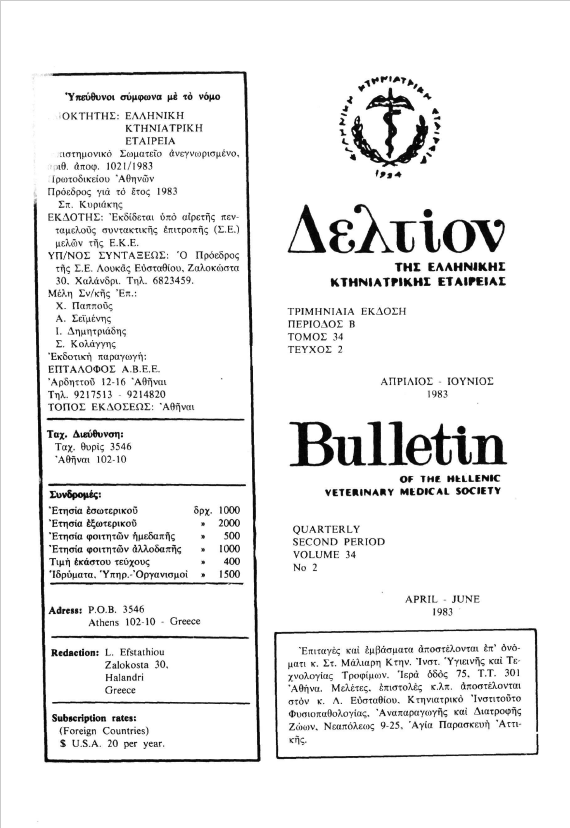The effect of chilling on the properties of freshly slaughtered beef
Abstract
The lowering of temperature determines a slowing down of chemical, biochemical (e.g. enzymatic) and some physical processes. The chilling of freshly slaughtered meat does not, however, lead to a continuous reduction in the speed of those biochemical processes that take place after slaughter. The breakdown of adenosine triphosphate (ATP) and of glycogen slows down between body temperature (37 - 38°) and about +10°C, but when the temperature is lowered still further these reactions accelerate until a temperature of about -1°C is reached and this results in serious chortening of the muscle fibres (cold shortening), and thus also in increased toughness of the meat which cannot be removed by hanging. Cold shortening can only occur when rapid chilling brings the temperature in the meat down to below +10°C before most of the ATP has been broken down. We should therefore only expect meat to become tough in this way where freshly slaughtered meat is chilled rapidly and particularly in the case of small carcases such sa sheep and calwes. Barcases should therefore not be chilled to temperatures below + IOC until after the onset of rigor mort is. The cold shortening phenomenon is caused by calsium ions which can not be transported from the muscle fiblils into the sarcoplasmic reticulum if the temperature is too low and which therefore induce strong muscle contractions. The speed of post mortem biochemical changes increases at temperatures below + IOC, reaching a maximum at about 1 C and this occurs not only in meat in the piece but also in freshly slaughtered minced meat.
Article Details
- How to Cite
-
ΔΙΔΥΜΟΠΟΥΛΟΣ Γ. (2019). The effect of chilling on the properties of freshly slaughtered beef. Journal of the Hellenic Veterinary Medical Society, 34(2), 165–169. https://doi.org/10.12681/jhvms.21593
- Issue
- Vol. 34 No. 2 (1983)
- Section
- Articles

This work is licensed under a Creative Commons Attribution-NonCommercial 4.0 International License.
Authors who publish with this journal agree to the following terms:
· Authors retain copyright and grant the journal right of first publication with the work simultaneously licensed under a Creative Commons Attribution Non-Commercial License that allows others to share the work with an acknowledgement of the work's authorship and initial publication in this journal.
· Authors are able to enter into separate, additional contractual arrangements for the non-exclusive distribution of the journal's published version of the work (e.g. post it to an institutional repository or publish it in a book), with an acknowledgement of its initial publication in this journal.
· Authors are permitted and encouraged to post their work online (preferably in institutional repositories or on their website) prior to and during the submission process, as it can lead to productive exchanges, as well as earlier and greater citation of published work.



